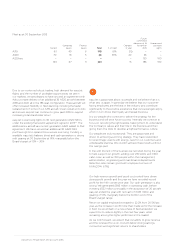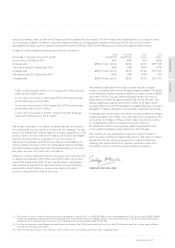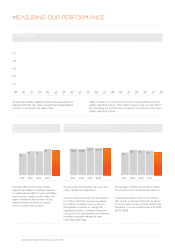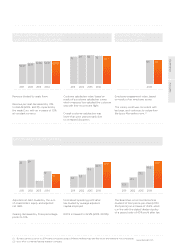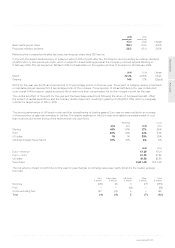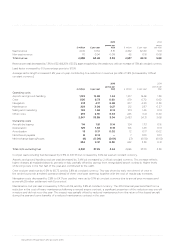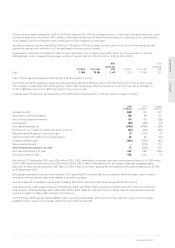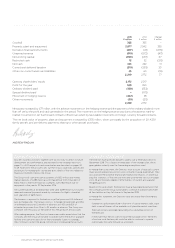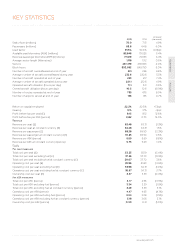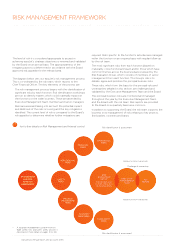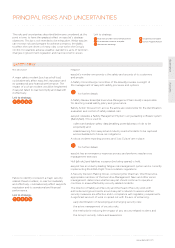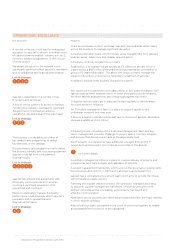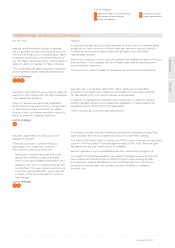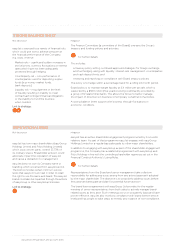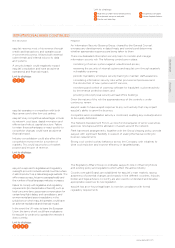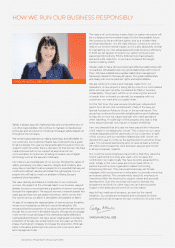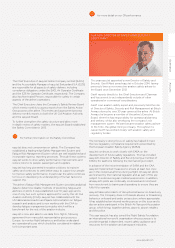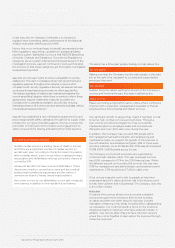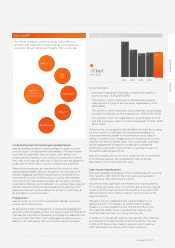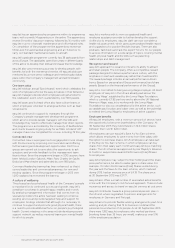EasyJet 2015 Annual Report Download - page 28
Download and view the complete annual report
Please find page 28 of the 2015 EasyJet annual report below. You can navigate through the pages in the report by either clicking on the pages listed below, or by using the keyword search tool below to find specific information within the annual report.
24 easyJet plc Annual report and accounts 2015
Risk
Risk management framework
The Group faces a number of risks which, if they arise, could affect its ability to achieve
its strategic objectives. The Board is responsible for determining the nature of these risks
and ensuring appropriate mitigating actions are in place to manage them effectively.
Risk appetite
The level of risk it is considered appropriate to accept in
achieving easyJet's strategic objectives is reviewed and validated
by the Board on an annual basis. The appropriateness of the
mitigating actions is determined in accordance with the Board
approved risk appetite for the relevant area.
Risk management process
The diagram below sets out easyJet's risk management process.
This is co-ordinated by the risk team, which reports to the
Chief Financial Officer. The key elements of the process are:
• The risk management process begins with the identification of
significant risks by each function. Risk identification workshops
are run to identify matters which could materially impact on
the functions or the wider business. These are attended by
Executive Management Team members and senior managers.
• Risks are assessed taking into account the potential impact
and likelihood of the risks occurring and the key mitigations
identified. The current level of risk is compared to the Board's
risk appetite to determine whether further mitigations are
required. Risks specific to the function's activities are managed
within the function on an ongoing basis with regular follow-up
by the risk team.
• The most significant risks from each function (based on
materiality, cross-functional impact and/or those which have
common themes across the business) are reviewed by the
Risk Evaluation Group, which consists of members of senior
management from each function. This Group's role is to
debate, agree and prioritise the principal business risks.
• These risks, which form the basis for the principal risks and
uncertainties detailed in this section, are challenged and
validated by the Executive Management Team and the Board.
• The principal business risks are monitored and managed
throughout the year by the Executive Management Team
and the Board with the risk team. Risk reports are provided
to the Board on a quarterly basis as a minimum.
• In addition to supporting the Board, the risk team supports the
business in its management of risks relating to key projects,
third parties, countries and bases.
PLC
BOARD
FEEDBACK FROM THE BOARD
FEEDBACK FROM THE BOARD
EXECUTIVE
MANAGEMENT
TEAM
Challenge & ownership
Risk identification & assessment
Risk identification & assessment
* A separate management system monitors
flight safety risks (easyJet's safety process is
described in more detail on pages 31 to 32).
RISK MANAGEMENT
PROCESS
SPONSORSHIP
AND RISK
APPETITE
ASSESSMENT
RISK
EVALUATION
GROUP
PRIORITISES AND
FILTERS PRINCIPAL
BUSINESS RISKS
REPUTATIONAL
RISKS
THIRD PARTY
RISKS
COUNTRY/
BASE RISKS
FINANCIAL
RISKS
OPERATIONAL
RISKS
PROJECT/
PROGRAMME
RISKS
SAFETY
RISKS*
Turn to page: 56
for further details on Risk Management and Internal control


